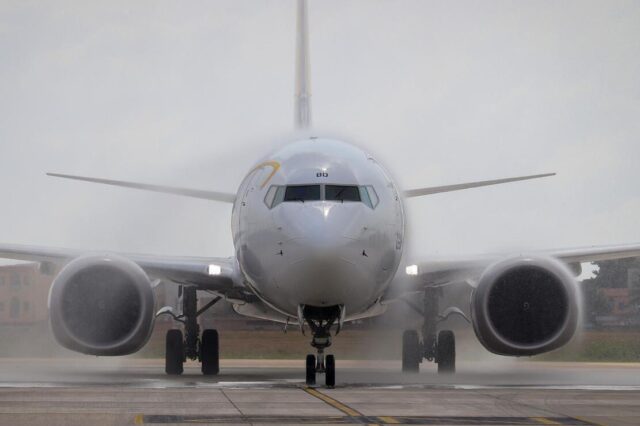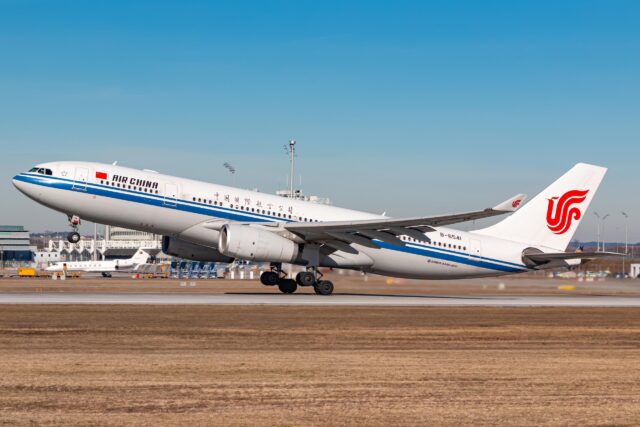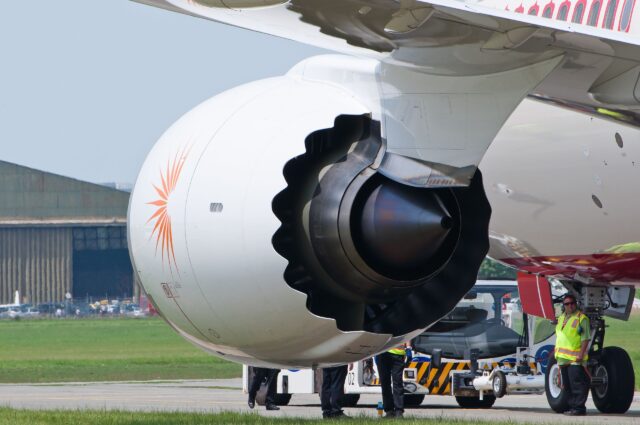Air Serbia weighs future fleet order as it signs Airbus A220 wet-lease with airBaltic

October 19, 2025

Air Serbia signed an agreement with airBaltic earlier this week for the supply of Airbus A220-300 aircraft. As of November 1, two aircraft will enter into service with the Serbian flag carrier, while in the peak summer season this will be as many as four.
This incremental capacity will serve both as a growth platform for Air Serbia and will also provide operational insight as the carrier begins planning for its future fleet replacements.
Air Serbia signs for up to four A220s
Air Serbia currently has a wet-lease agreement with Lithuania’s GetJet Airlines for two Airbus A320 aircraft. This type of agreement covers aircraft, crew, maintenance and insurance (ACMI). Aerospace Global News understands that there are currently four GetJet planes operating for Air Serbia this month, registered LY-CAP, LY-FAS, LY-GYM and LY-WIL.
This agreement will end with the start of the airBaltic wet lease, which will begin with two A220-300s as of 1 November. As demand picks up during the peak summer season, up to four aircraft will be in service with Air Serbia. This builds on the existing codeshare deal between the two airlines signed in 2015.

“With Air Serbia, we have maintained a long-standing cooperation for more than ten years, ensuring good connectivity between the Baltic region and the Balkans. Expanding this cooperation through the ACMI agreement supports efficient fleet use and reliable operations for both airlines,” said Thomas Ramdahl, Chief Commercial Officer at airBaltic.
The ACMI model enables airBaltic to provide flexible capacity to partner airlines across Europe while maintaining consistent product quality and operational reliability with our modern Airbus A220-300 fleet and experienced crews,” he continued.
From codeshare to ACMI: airBaltic and Air Serbia deepen cooperation
airBaltic’s A220-300s are fitted with 148 seats, representing a slight capacity decrease compared to Air Serbia’s three 180-seater Airbus A320s. They are much more comparable to the airline’s nine A319s with 144 seats each.
“We are very pleased to continue developing our cooperation with airBaltic, one of the most innovative airlines in Europe and our long-time codeshare partner,” says Jiří Marek, CEO of Air Serbia. “This partnership is of particular importance for Air Serbia, as on our flights, passengers will have the opportunity to travel comfortably and quickly to their destinations aboard modern Airbus A220-300 aircraft.”
SWISS is the only airline that currently flies the A220 to Belgrade. It uses a mix of its own equipment and wet-leased planes from airBaltic.
Assessing future fleet needs
Air Serbia has hinted at the possibility of an Airbus A220 order in the future. Marek said that the airline remains “committed to innovation and technological development, all with the aim of strengthening our competitiveness in the European market.”
“This type of aircraft will be an important model and reference point for future decisions regarding the composition of Air Serbia’s fleet,” he continues, ” all in line with the continued development and implementation of the Company’s strategic plans.”

Airlines in two of Serbia’s neighbouring countries also operate the Airbus A220. To the East is Bulgaria Air with its fleet of two A220-100s and five of the larger -300s. Further to the West is Croatia Airlines with its fleet of six A220-300s. It also operates an A220-100, which has the densest configuration for the type worldwide with 127 seats.
Air Serbia currently operates a fleet of 28 planes, according to information from planespotters.net. This includes:
- 10x ATR 72s (10.4 years old)
- 9x A319s (18.5 years old)
- 3 A320s (15.1 years old, not including GetJet wet leases)
- 4 A330s (13.6 years old)
- 2x E195s (14.2 years old)
The airline continues to grow, in particular on the long-haul front. It recently announced it would resume service to Toronto after a 30-year hiatus.
Featured image: airBaltic
















